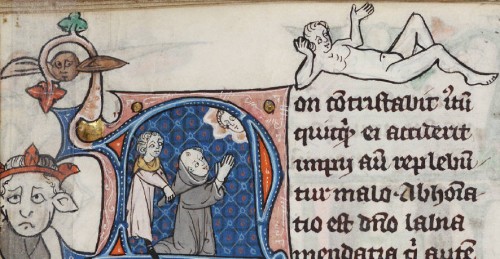Found this snippet on the blog Brain Pickings and immediately it capture my attention.
Not surprising, the things they wrote weren’t so different than the ones you and I might post today on social media.
A few of my Marginalia favorites from Brain Pickings:
I’m very cold.
New parchment, bad ink; I say nothing more.
The parchment is hairy.
Now I’ve written the whole thing: for Christ’s sake give me a drink.
Of course, most marginalia are notes on the text, but who hasn’t scribbled a complaint or doodled a bit in the margin. Sometimes it was intentional and meant to inspire, or maybe just titillate while in study as with the Rothschild Canticles, produced for a nun at the turn of the fourteenth century that the blog Got Medieval showed us.
Got Medieval cites one scholar on the marginals as saying of them that they bring a “powerful counterpart to the framed images” while failing to explain why they were included.
Below are a few examples of marginals from monks of the period, some simple sketches, some elaborately executed.
The notations got me thinking about other margin drawings, and quick Google search and who knew that there was a whole philosophy of understanding to their meaning complete with Philosophical ideas about them. Doodles like this, it seems, have links to Freudian psychology characterizing it, in part as paralleled with syncope and intimate revolt.
Looking back at some of my lesser doodles during school, I think I could be persuaded to probably agree.
My favorite modern day marginalia (now called marginals) comes in the form of the tiny illustrations of Sergio Aragonés in MAD Magazine.
Looking at a few of them makes me think of the monks scribble of lament “That’s a hard page and a weary work to read” the relief from which I always found when reading MAD by looking at Aragonés scribbles in the corners.
Looking at them again make me think of the monks lament on how much easier they make looking at the page.
What do you scribble as your marginals? Are you a doodler or a scribbler in the margins?






